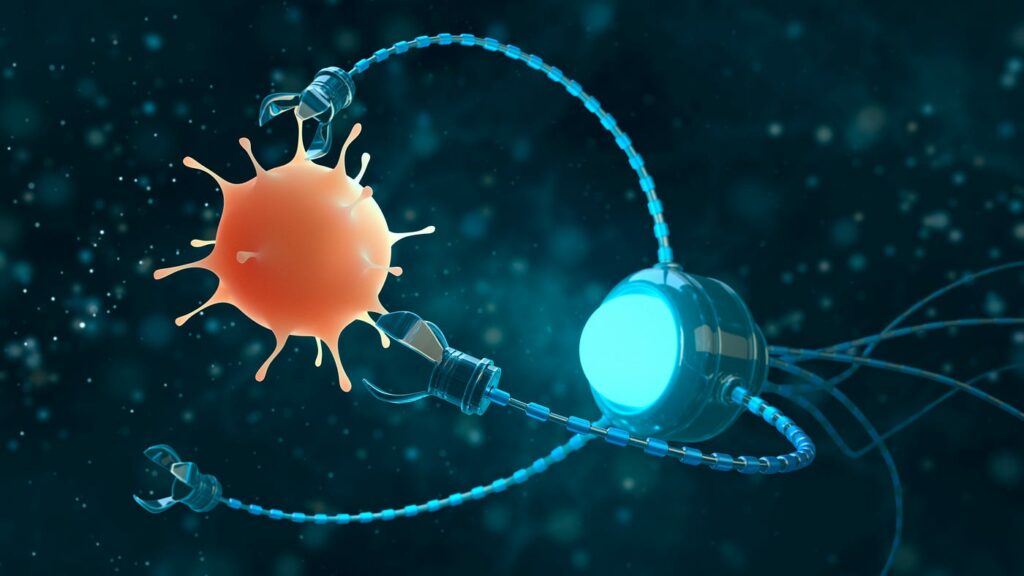
Nanotechnology, a field that once seemed like science fiction, has now become an integral part of various industries. This article delves into the fascinating world of nanotechnology, exploring its foundations, applications, challenges, and recent advancements.
Introduction to Nanotechnology
Nanotechnology involves manipulating matter at the nanoscale, typically dealing with structures less than 100 nanometers in size. This field’s significance lies in its potential to revolutionize diverse sectors, from medicine to electronics.
Evolution of Nanotechnology
The journey of nanotechnology began with theoretical propositions by physicists like Richard Feynman. Over the years, it has evolved into a multidisciplinary field that combines physics, chemistry, biology, and engineering.
Fundamentals of Nanoscale Manipulation
Exploring the Nanoscale
To comprehend nanotechnology, one must first appreciate the scale at which it operates. The nanoscale introduces unique properties and behaviors, allowing scientists to create materials with unprecedented characteristics.
Key Principles of Nanotechnology
At its core, nanotechnology relies on principles such as quantum mechanics and surface science. Understanding these principles is crucial for manipulating matter at the nanoscale effectively.
Applications in Medicine
Nanomedicine Breakthroughs
In medicine, nanotechnology has paved the way for groundbreaking therapies. Nanoparticles can be engineered to target specific cells, enabling precision medicine and minimizing side effects.
Targeted Drug Delivery Systems
The development of nanocarriers for drug delivery has revolutionized the pharmaceutical industry. These systems enhance drug absorption and distribution while reducing toxicity.
Nanotechnology in Electronics
Miniaturization and Efficiency
Nanotechnology plays a pivotal role in the electronics industry, enabling the miniaturization of components. This not only enhances device efficiency but also opens the door to novel applications.
Quantum Dots and Their Role
Quantum dots, nanoscale semiconductor particles, have gained prominence in displays and imaging technologies. Their unique optical properties contribute to vibrant displays and high-resolution imaging.
Environmental Impact of Nanotechnology
Nanomaterials and Sustainability
While nanotechnology offers environmental benefits, the production and disposal of nanomaterials raise concerns. Striking a balance between innovation and sustainability is crucial.
Potential Risks and Precautions
Understanding the potential risks associated with nanotechnology is vital. Scientists and policymakers must work collaboratively to establish safety protocols and regulations.
Nanotechnology in Energy
Nanoscale Innovations in Renewable Energy
Nanotechnology has facilitated breakthroughs in renewable energy. From improving solar cell efficiency to enhancing battery performance, nanoscale innovations are shaping the future of clean energy.
Improved Efficiency in Energy Storage
Nanomaterials play a key role in developing advanced energy storage systems. These materials enhance battery capacity, charging speed, and overall performance.
Challenges and Ethical Considerations
Addressing Safety Concerns
As nanotechnology progresses, addressing safety concerns becomes paramount. Research must focus on understanding the potential environmental and health impacts associated with nanomaterials.
Ethical Implications of Nanotechnology
The ethical considerations surrounding nanotechnology include privacy concerns, equitable access to benefits, and responsible research practices. Striking a balance between innovation and ethical standards is a ongoing challenge.
Recent Advancements in Nanotechnology
Cutting-Edge Discoveries
Recent breakthroughs include the development of nanorobots for targeted drug delivery and the use of nanomaterials in creating flexible electronic devices. These advancements push the boundaries of what nanotechnology can achieve.
Future Prospects and Possibilities
The future of nanotechnology holds exciting possibilities, from personalized medicine to advanced computing. Continued research and collaboration will drive further innovations in this dynamic field.
Educational Initiatives in Nanotechnology
Promoting Awareness and Understanding
Educational initiatives are essential for bridging the gap between scientific advancements and public understanding. Promoting awareness ensures informed decision-making and encourages the pursuit of careers in nanotechnology.
Educational Resources and Programs
Universities and research institutions offer specialized programs in nanotechnology. These initiatives equip students with the knowledge and skills needed to contribute to the field’s growth.
Conclusion
In conclusion, nanotechnology stands at the forefront of scientific innovation, impacting diverse industries and shaping the future. As we navigate the challenges and ethical considerations, the continuous collaboration between scientists, policymakers, and the public is crucial for realizing the full potential of nanotechnology.



